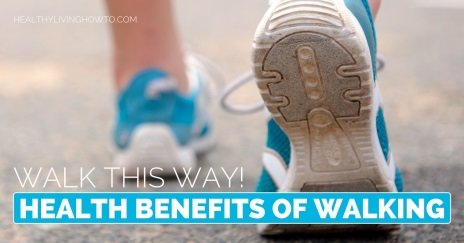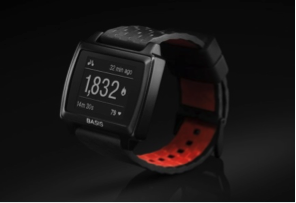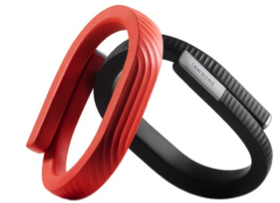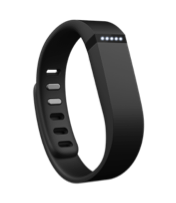We are constantly bombarded with information regarding the benefits of exercising and increasing our activity levels. Despite this fact however, most of us still do not get the recommended amount of exercise.
One simple way that you increase your activity level is to begin walking more. It is a form of exercise that is not too strenuous and one that we all can easily implement into our daily lives. More importantly, it has many of the health benefits associated with more vigorous forms of exercise.
- Walking is associated with weight loss and reduced weight gain.
- Walking can help lower your blood pressure as well as reduce your risk of stroke and diabetes.
- Walking helps to stop bone loss associated with osteoporosis.
- Walking has a lot of positive effects on our mental health. It can help reduce memory decline, risk for Alzheimer’s disease, and help relieve insomnia.
- Walking releases chemicals in your body called endorphins. These chemicals serve as natural painkillers in your body and help improve your mood.
How much should I walk each week?
The Department of Health recommends getting 2 hours and 30 minutes of exercise each week; you should aim to get 30 minutes of moderate activity each day. It is recommended to start off slow and steadily increase your activity until you reach these goals. If you start off slow, you are less likely to burn out and are much more likely to stay with your program.
Is there anything I can do to help me stay motivated with a new walking program?
To help you stay motivated with your new walking program, you might want to consider using an activity tracker or pedometer like those made by Fitbit, Jawbone, and Garmin. These products are great for helping to track your progress; keep a record of the number of steps you take and give you goals to meet each day. Many of the trackers set goals of 10,000 steps per day, roughly equal to 5 miles. There are numerous benefits associated with hitting this number of steps daily. However, this goal may be too ambitious for some. If you aim to get the recommended 30 minutes of exercise each day you are likely to hit 7000 to 8000 steps. From here, you can look to increase your activity to 10,000 steps per day.
During the first week of use, these tools can help you establish a baseline for how many steps and how much activity you are normally getting. From here, you should try to increase your steps per day by 500 to 1000 steps every week. Eventually, you will consistently hit 10,000 steps per day. Then, these tracking tools can help keep you motivated, so you stay with your program.
What are some recommended activity trackers?
|
Product |
Price |
Features |
Waterproof? |
Battery Life |
|
$199.99 |
Tracks heart rate, calories burned, skin temperature, and perspiration, provides detailed information on sleep patterns, notifies you on incoming calls and texts, automatically tracks your activity
|
Yes, up to 50 meters |
4 days |
|
|
Jawbone UP24 |
$149.99 |
Tracks activity and number of steps, monitors sleep, can set alarms to wake you up or remind you to workout, compatible with my fitness pal
|
No. Splash resistant, but not water-proof |
5 to 7 days |
|
Fitbit Flex |
$99.99 |
Tracks activity and number of steps, monitors sleep, can set alarms to wake you up, syncs automatically with Fitbit phone app
|
No. Water-resistant, but not water-proof |
5 days |
|
Fitbit Zip |
$59.99 |
Tracks steps, distance, calories burned, and active minutes, wirelessly syncs with Fitbit phone app |
No. Water-resistant, but not water-proof |
Up to 6 months |
You can also purchase a simple pedometer. These tools may not have the same features or necessarily the same accuracy as the expensive activity trackers, but they can still be very useful. They can help you identify your activity levels and help you work towards increasing them.
If you do not want to purchase an activity tracker or pedometer and you have a smartphone, there are several apps that you can download to help you track your fitness.
S Health App: If you have the Galaxy S4 or S5, then your phone is already pre-downloaded with this app. The S health app can serve as a great (and free) alternative to an activity tracker. It has a built in pedometer to help you track your daily steps, an exercise section to help you track distance and speed during your runs/walks, as well as a nutrition diary to help you track your daily food intake. Other features include a coach to provide you with tips on how to reach your fitness goals and a heart rate monitor built-into the back of the phone.
Apple Health App: If you have an IPhone (4s or newer versions) than you have access to the Apple Health app. This app can help you track your steps, distance traveled, and calories burned. It is best used in combination with other fitness and nutrition tracking apps and devices. The health app compiles all of this data into one place and allows you to track your progress on a variety of areas.
Map My Fitness App: this app allows you to track distance, time, and speed during a variety of activities, including walking, running, biking, and hiking. The app is free, but a premium version can be purchased to allow for more features. This app can be used in combination with the My Fitness Pal app, which allows the user to track their food intake.
There are also many other fitness and activity apps that you can download. Some of the more popular ones include Argus, Endomondo,and Strava Cycling and Running. These are also great alternatives to purchasing activity trackers and can help you increase your activity.

 hover background
hover background



